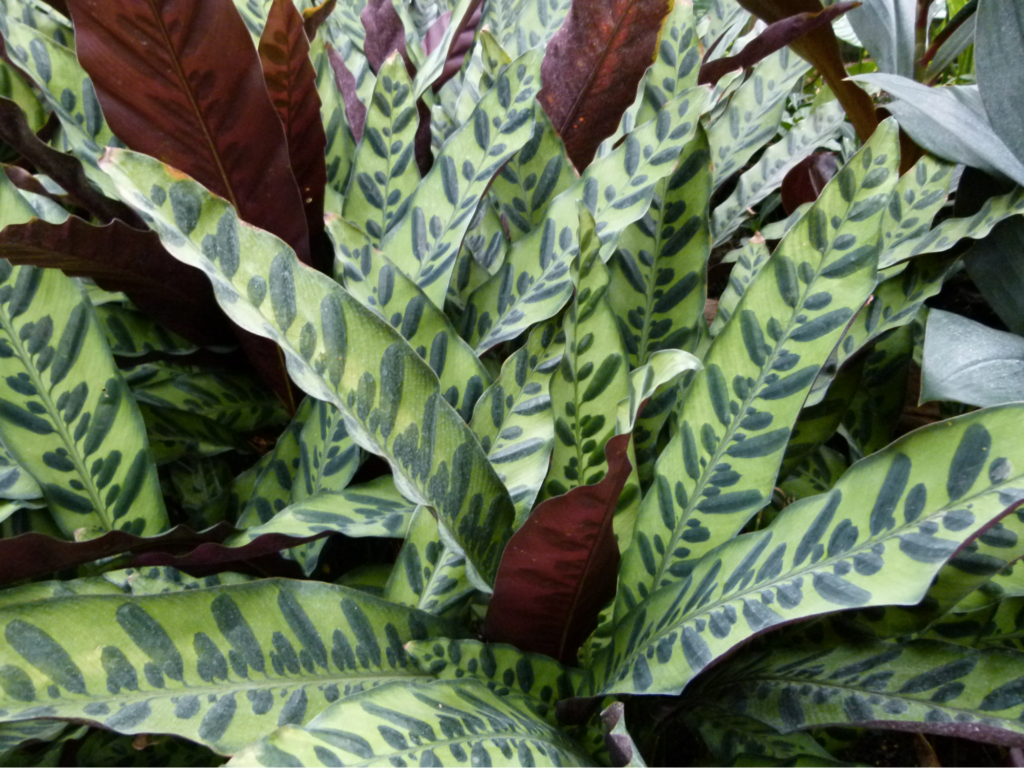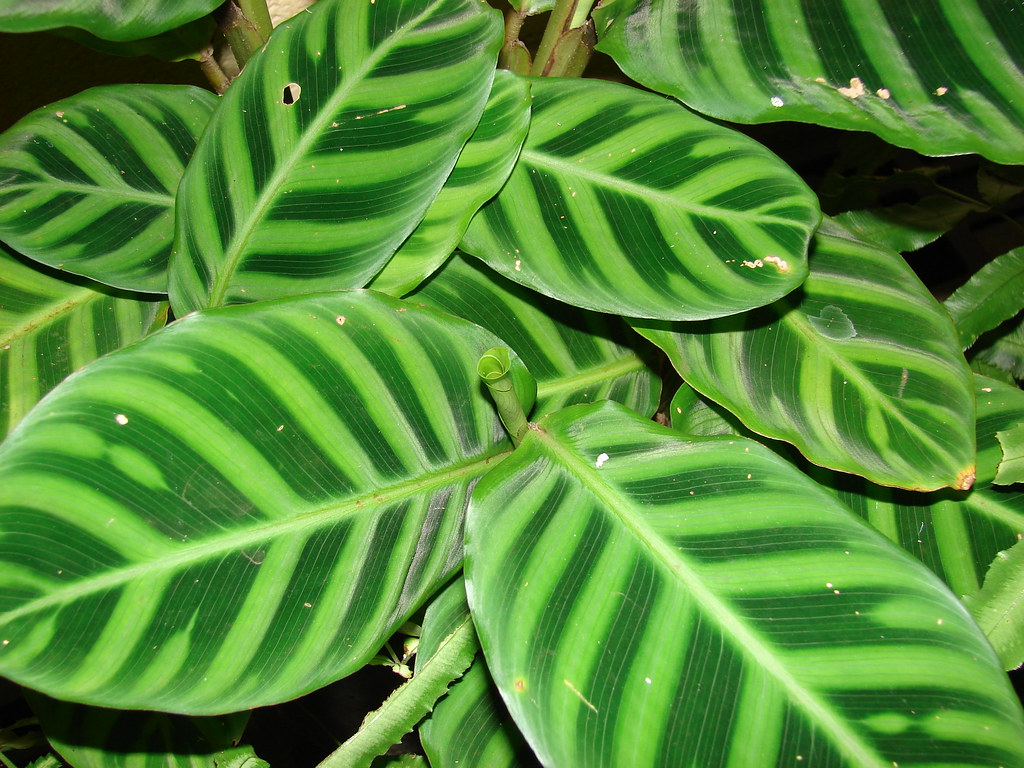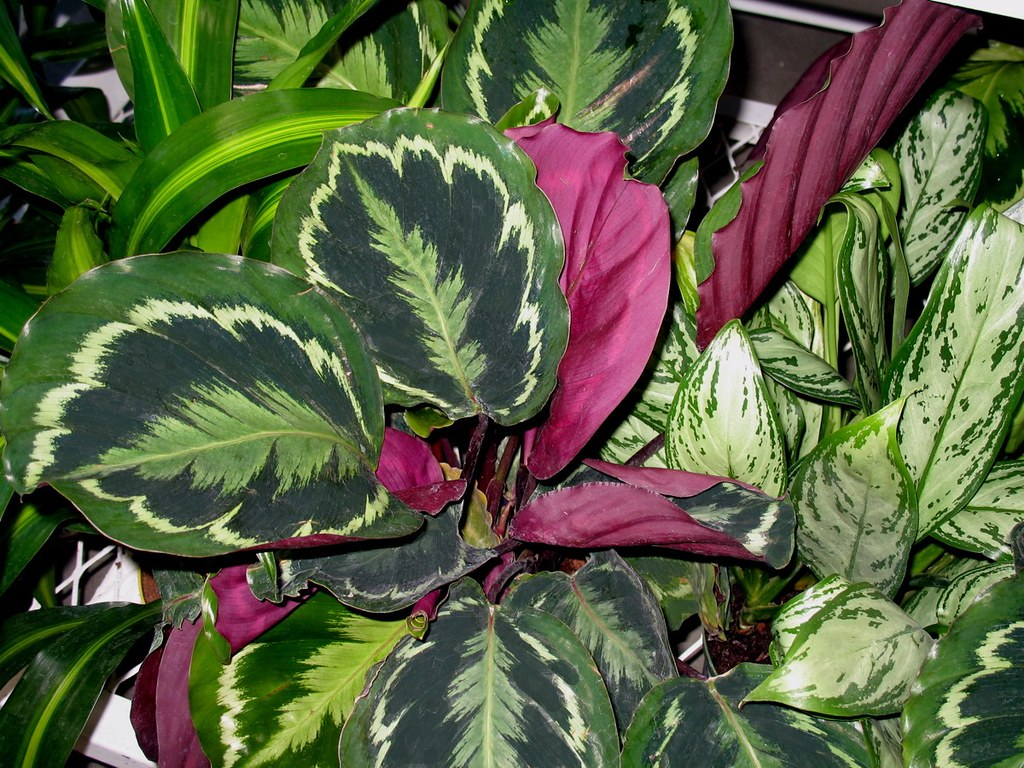Have you ever questioned why your Calathea plants‘ brilliant foliage curls despite the love and attention you give them? In this article, we’ll give you a treat by outlining the most likely reasons why calathea leaves curl, a common concern among plant enthusiasts, occurs. Of course, we’ll also demonstrate how to correct it.

Curled leaves on calatheas are an indication of plant dryness and a defense mechanism for the plant to prevent water loss. However, root damage from root rot, overfertilization, or disease can also result in leaf curling. Leaf curling is most frequently caused by underwatering, low humidity, or excessive heat.
If your plants are curled up, you can’t really boast about the lovely leaves, can you? Read on to learn the causes of your calathea leaves curling and some preventative measures you may take.
Calatheas Overview

Calatheas are ubiquitous indoor tropical plants that are frequently seen in homes and businesses. They are sometimes referred to as Prayer Plants. This is because of its easy development and capacity to flourish in environments with minimal light, such as indoors.
Calatheas are low care and available in a variety of kinds with varied leaf forms and patterns. The market offers hundreds of Calathea types in red, green, and silver hues.
Calatheas are nevertheless prone to having wavy and curly leaves, despite their tolerance for little light and complete neglect. But don’t worry! There are a number of reasons why calathea leaf curling occurs. Once you understand why, you can care for your plant correctly to restore its health.
RELATED: 20 Types of Calathea Plants that You Should Have in Your Garden
Why Are The Leaves On My Calathea Plant Curling?

There are several causes for the curling leaves of your Calathea. It could be caused by water quality issues, incorrect watering techniques, excessive watering, or underwatering.
Other potential causes also include improper fertilizer application, temperature, humidity, light, pests, illnesses, and even the age of your plant.
1. Watering Issues
Calatheas, like other houseplants, have extremely precise watering requirements in order to thrive. The leaves will dry up and curl up if they receive insufficient moisture. Calathea leaves will curl, and the plant will be extremely unhappy if it receives too much water, which will “drown” it and cause root rot.
The soil of your Calathea should feel moist but not waterlogged. At least once every day, use a stick or the tip of your finger to check the moisture levels.
While you should always be able to locate moisture a few millimeters below the surface, the soil’s top should be allowed to slightly dry between waterings. Never let your Calathea dry up entirely unless you’re attempting to solve a fungal issue.
Your Calathea must be wet, but it must never be permitted to stand in a water-filled area. Give frequent tiny doses of water to strike the appropriate balance.
In order to prevent startling the plant, make sure the water is at room temperature. Examine your surroundings’ water evaporation rates and check on your plant at least twice daily.
Make sure your Calathea’s pot drains correctly to avoid root rot. Plant illness is frequently brought on by standing water at the pot’s base.
In the winter, Calatheas require a little less watering. The plant takes in less water and nutrients because of the cold air’s effect on its short dormancy. Keep an eye on the soil’s moisture level and make sure the surrounding area is kept damp.
2. Humidity Issues
To maintain a healthy Calathea, humidity is necessary. Wide leaves on these plants allow them to take in moisture; if the air becomes dry, the leaves will begin to curl and turn yellow. The leaves’ edges can shatter when touched, and you might also note that they have a harsh or brittle feel.
First, spray the leaves of your Calathea to give them a little boost of moisture. Use a spray bottle on the gentlest setting; direct water streams might harm the plant, especially if its leaves are already weak.
Two to four hours will be spent with moisture thanks to misting. Regular misting will revitalize a calathea while you adjust the humidity in its habitat, but this is not a long-term fix.
Find a means to maintain the highest level of humidity in the air surrounding your calathea next. A desktop humidifier that you can put next to tiny plants is a terrific option for humidifying the air. For the ideal atmosphere, turn the humidifier on and off as needed.
A lot of Calathea growers set their plants on a peat moss or pebble substrate that is submerged in water. The surroundings will get humid as the water evaporation occurs during the day. This strategy often delivers enough ambient moisture to keep your plant healthy, provided the pool of water is not directly contacting the plant’s roots. To stop germs from growing, make sure the water is maintained clean.
Finally, terrariums, bottle gardens, and other enclosed spaces are excellent for growing Calatheas and other prayer plants.
By covering your Calathea with a plastic bag to catch the moisture from the air around it, you can simulate this effect in the near future. Watch for the formation of condensation and give the bag at least one daily airing.
3. Light Issues
Tropical rainforests’ canopies support the growth of wild Calathea plants. These plants flourish in shaded, dim environments with indirect sunlight that resemble the cold undergrowth of their natural habitat.
In direct sunlight, the vivid white and green patterns on your Calathea plant’s leaves may fade or disappear entirely. Calatheas often curl their leaves, hoping to obscure more light. If you move your plant back into the shade, the leaves must emerge in a day or two.
Never put your Calathea near a window that gets direct sunlight or a source of open light. Instead, choose a site that is shaded and has some ambient light. The leaves of caletheas may even move to collect a bit of additional sunlight if you position them close to a north-facing window because they like access to indirect light.
Make sure your Calathea is not exposed to direct sunlight at any time of day, no matter where you set it. In order to prevent burning the leaves of your plant, you might wish to place a tiny barrier between it and the light.
4. Water Quality Issues
Calathea’s leaves will curl up as a sign of concern, although the issue may not be obvious right away. An excess of minerals in the water supply is one typical reason why Calatheas get ill.
Your Calathea will wilt and fade because to the high salt content of tap water. You’ll notice that the margins of the leaves of your Calathea are yellow if it has a hard water issue, and you could even detect a buildup of salt on the soil’s surface.
Try using distilled or bottled water in your plant. You might also be able to catch rainwater where you live to use on your plants. Don’t give your plant too much water at once, and leave the water out at room temperature.
RELATED: How To Care for a Calathea Ornata? (Questions + Answers)
5. Temperature Issues
Calathea plants thrive best in environments that are similar to their native habitat. If it gets too cold, your plant may curl up in an attempt to remain warm. If it becomes too hot, the leaves will start to dry up and shrivel. Both problems may be overcome by raising the temperature of the plant’s surroundings.
The plants’ optimal temperatures are between 60 and 85 °F (16 and 29 °C). If the leaves are curling in your room and the temperature is between these two, consider moving the thermostat up to 75°F (24°C).
Once the curled Calathea leaves start to improve, keep an eye on how your plant responds and adjust the temperature as necessary.
A heating or air conditioning vent should not be put immediately in front of your Calathea. Air bursts that are too hot or too cold can startle your plant and harm the leaves.
Hold your palm out in front of your plant; if you feel a surge of air, your fragile Calathea could find it too much. The temperature of your plant may also be impacted by surrounding heat sources such as ovens and laptops.
Your thermostat’s reading of the average room temperature may not always correspond to the real temperature in the corner where your Calathea is located. This is especially true in large workplaces when the overall building’s temperature is taken into account. You may use a thermometer to measure the temperature of the soil and surroundings around your Calathea.
6. Pests Issues
Pests can also impede growth and cause damage to your plant. The most common pests that consume the tissues and sap of Calathea plants are aphids, mealybugs, and spider mites. The leaves may develop curls due to these insects.
It is simple to eliminate any pest and eventually restore your plants’ nice and healthy appearance. Apply a neem oil to the infected area or use diluted soap solutions to treat the plant.
Use a spray bottle that you use to sprinkle your plants with water and liquid dish soap, or you can wipe all of your plants’ leaves and stems. Do it once a week until you no longer see any signs of pests.
7. Plant Age
The curling of the leaves can occasionally be completely unproblematic. This leaf may have already aged, which would explain the curling. Typically, older, lower foliage is where this happens. If an outdated leaf is the cause of the curling, there is no need for alarm.
How To Unfurl Your Curling Calathea Leaves?

The leaves of calathea plants prefer to move. A healthy Calathea will spin its leaves gently to catch the ambient sunlight, however, a sick Calathea will firmly coil its leaves to indicate concern. The leaves could even uncurl before your eyes once you’ve fixed the issue.
- Remove your plant from direct sunlight. Because they detest it, Calatheas’ leaves will get irreversibly damaged if they are exposed to too much direct light often. While relocating them, make sure there is still ambient light available for them to absorb.
- The room’s temperature should be adjusted. Temperatures between 60 and 85 °F (16 and 29 °C) are ideal for Calatheas. Check the temperature where your Calathea is sitting, not simply the room’s temperature.
- Increase humidity levels of the environment. The most frequent cause of curled Calathea leaves is low humidity. Read my post on raising humidity and use a digital hygrometer to measure the humidity.
- Alter your watering practices. The soil of your Calathea should always be wet, but it should never be submerged in water. To get the ideal equilibrium, regularly monitor your watering practices.
- Use distilled water instead. Your Calathea cannot survive in hard water that contains salt or other minerals. For a healthy plant, think about utilizing rainwater or bottled water.
After completing these instructions, your Calathea should appear considerably brighter, more at ease, and healthier. Any leaves with irreversible damage should be delicately pruned away. Give it a little boost in soil nutrients but don’t feed it too much fertilizer to avoid complications.
Give your Calathea at least a week to adjust to the new circumstances, and keep a close eye on the plant to prevent more issues.
RELATED: Calathea Medallion: The Best Care, Propagation, and Watering Guide For You
Final Thoughts
Depending on the type, the exquisite leaves of Calatheas may be waved, but sudden curling is unquestionably a sign of sour mood. Calathea leaves are curling due environmental elements, including light, temperature, humidity, and water, or, more commonly, by carelessness and neglect.
Does it warrant a major alarm? Actually, no. It’s simple to resolve this issue. You can definitely correct Calathea’s leaves curling if you take the time to identify the root of the issue.
Keep in mind that you can never get away with these issues when caring for plants. All you have to do is learn how to take good care of your plants and pay attention to what they require. They will communicate their needs to you in their own unique ways.
Editor’s Recommendations
15 Breath-taking Types Of Calathea For Your Private Tropic Corner
Calathea Rufibarba: The #1 Care, Propagation, and Watering Guide For This Fuzzy Plant
Calathea White Star: The #1 Care, Propagation, and Watering Guide







